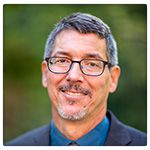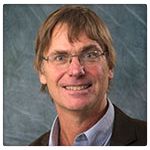 |
|
| Dr. Elvin Delgado | |
 |
|
| Dr. Christopher Keane | |
 |
|
| Dr. Daniel Schwartz | |
 |
|
| Dr. Joel Swisher | |
 |
|
| Steve Klein |
Universities drive clean technology innovation while creating the next generation of STEM professionals. CleanTech Alliance hosted energy leads from four of Washington State’s leading universities at the April #CleanTechBacon breakfast sponsored by Perkins Coie.
The university innovation panel, moderated by CleanTech Alliance Board Chair Steve Klein, included:
- Dr. Elvin Delgado, Director of the Institute for Integrated Energy Studies at Central Washington University (CWU)
- Dr. Christopher Keane, Vice President for Research at Washington State University (WSU)
- Dr. Daniel Schwartz, Director of the Clean Energy Institute at the University of Washington (UW)
- Dr. Joel Swisher, Director of the Institute for Energy Studies at Western Washington University (WWU)
The panelists shared insights spanning collaboration, curriculum, workforce development, technology transfer and more. Here are insights from the sold out breakfast session.
Preparing the next generation of professionals comes first and foremost. The STEM gap is very real, and it’s impacting the cleantech sector. Up to 50,000 STEM jobs will go unfilled this year in Washington State alone.
The panel outlined how universities are developing cleantech professionals that fill industry workforce needs with the necessary job skills from day one. Each university is focused on this mission. CWU, for example, created a new bachelor’s program to produce energy managers with the applied skills that industry can’t currently find but want to hire.
Dr. Keane outlined how WSU’s Imagine Tomorrow program and Clean Energy Ambassador network is helping to encourage more students into STEM fields.
Cross-university collaboration is critical. Don’t think the football rivalry extends off the field. Northwest university work amazingly well together. In fact, each of the four panelists have collaborated on multiple clean energy and sustainable technology programs throughout the years. The transactive energy campus currently being tested by UW, WSU and the Pacific Northwest National Laboratory as part of the Washington State Clean Energy Fund is a prime example.
Collaboration extends deep within industry. Northwest universities need to focus on their internal missions, but those missions aren’t achievable without strong industry sector collaboration across research, industry, policy and more. The Washington Clean Energy Testbeds at the UW Clean Energy Institute is a prime example. The state-of-the-art user facility allows industry and the research community to work side-by-side on some of the energy sector’s most pressing issues. WWU also engages a diverse group of industry advisors to ensure the Institute for Energy Studies stays aligns its programs and curriculum with employer needs.
Spinning out new innovations to market is important…but really, really hard. Universities are critical to researching, developing and delivering new clean technology innovations to market. The bureaucracy of licensing and transferring university IP can be difficult at best. Each university is actively working to streamline commercialization and technology transfer. Partnerships are also being forged with commercialization programs like the Cascadia CleanTech Accelerator.
There’s paradigm shift in our long-term relationship with ongoing education. The higher education model is evolving. Students traditionally entering universities as undergraduates, declaring a major, assembling knowledge in that field, and then leaving to enter that field.
The new model still centers on declaring a major and entering the field. But, that’s just the first step. Students now return to education throughout their career to learn new things that didn’t exist during previous coursework. The result extends and amplifies higher education through a much more fluid and interactional exchange.
Want to learn more from the university research panel? Check out the #CleanTechBacon Twitter conversation or watch the full breakfast session recorded video below.